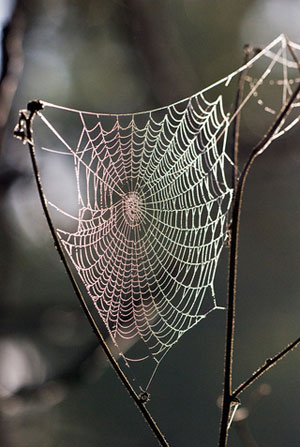
Usually, working out which spiders are which can be a cumbersone, long-winded process, involving tweezers and specimen jars and many hours under a bright lamp in the case of rare and unusual species. A team from the signals and communications department of the University of Las Palmas de Gran Canaria, led by Jaime Ticay-Rivas, decided to instead use a spider's web as a kind of "biometric identification" to automate the process.
Using photographs of spider webs taken in Costa Rica and Panama, the team applied various image clarification techniques to isolate the shape of the web. Those techniques include principal component analysis, independent component analysis, discrete cosine transform and wavelet transform—basically, techniques that identify the key, most distinctive part of the centre of a web by isolating it from the background "noise" in the image. Then, it correlates that with characteristics found in the rest of the web to further narrow the range of possibly species.
Four spider species were included in the study—Anapisona simoni, Micrathena duodimspinosa, Zosis geniculata and an Orb Weaver spider from the genus Allocyclosa. The results are striking, with a 99.6 percent accuracy rate achieved in identifying the spider species from their webs alone.
Speeding up spider recognition could prove a valuable tool for improving our ability to monitor the biodiversity of endangered habitats. The tool could prove even more useful if automated animal counting could be rolled out for other species, though it's hard to see anything being quite as handy a signature as a web.
This post originally appeared on Wired UK.
reader comments
16